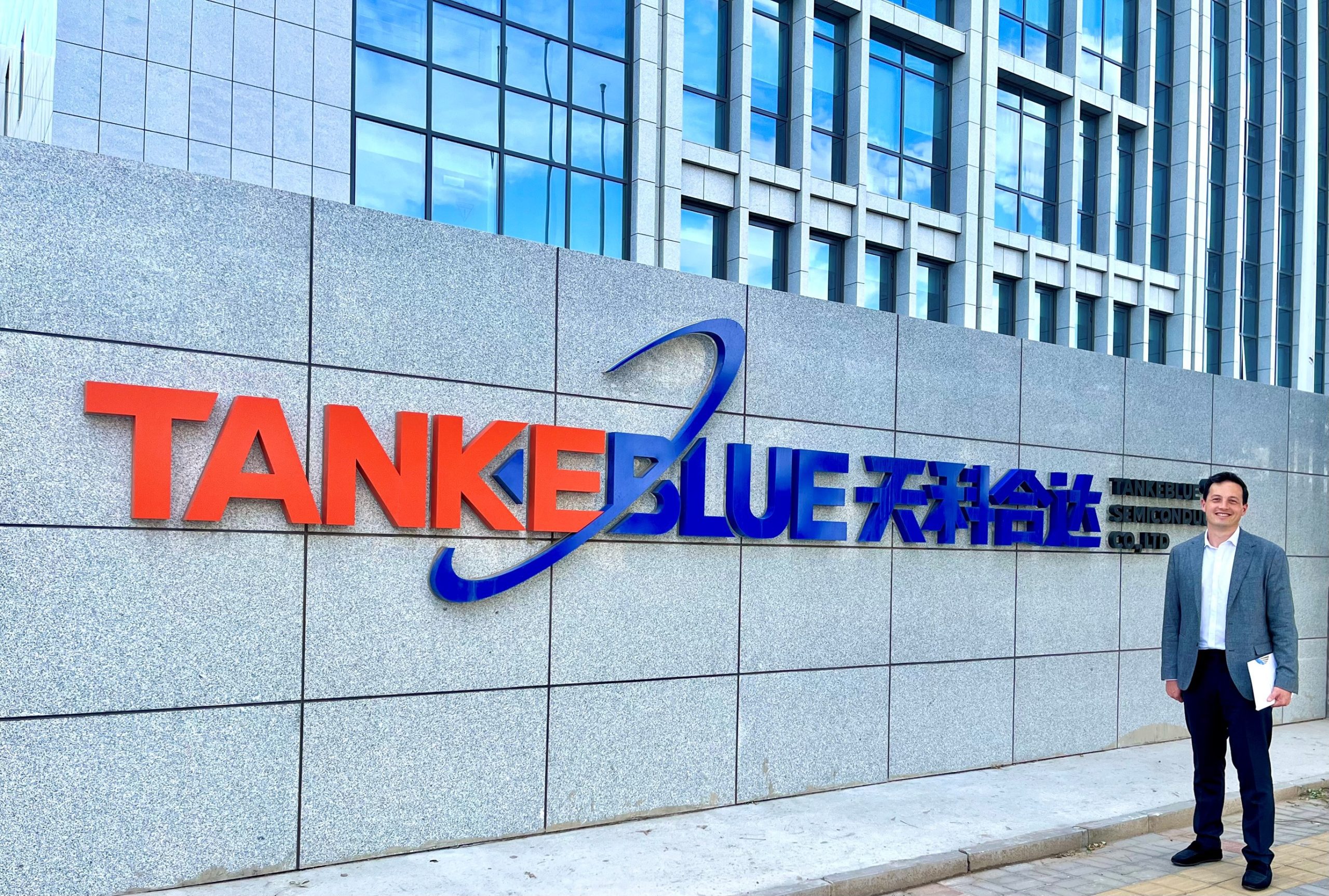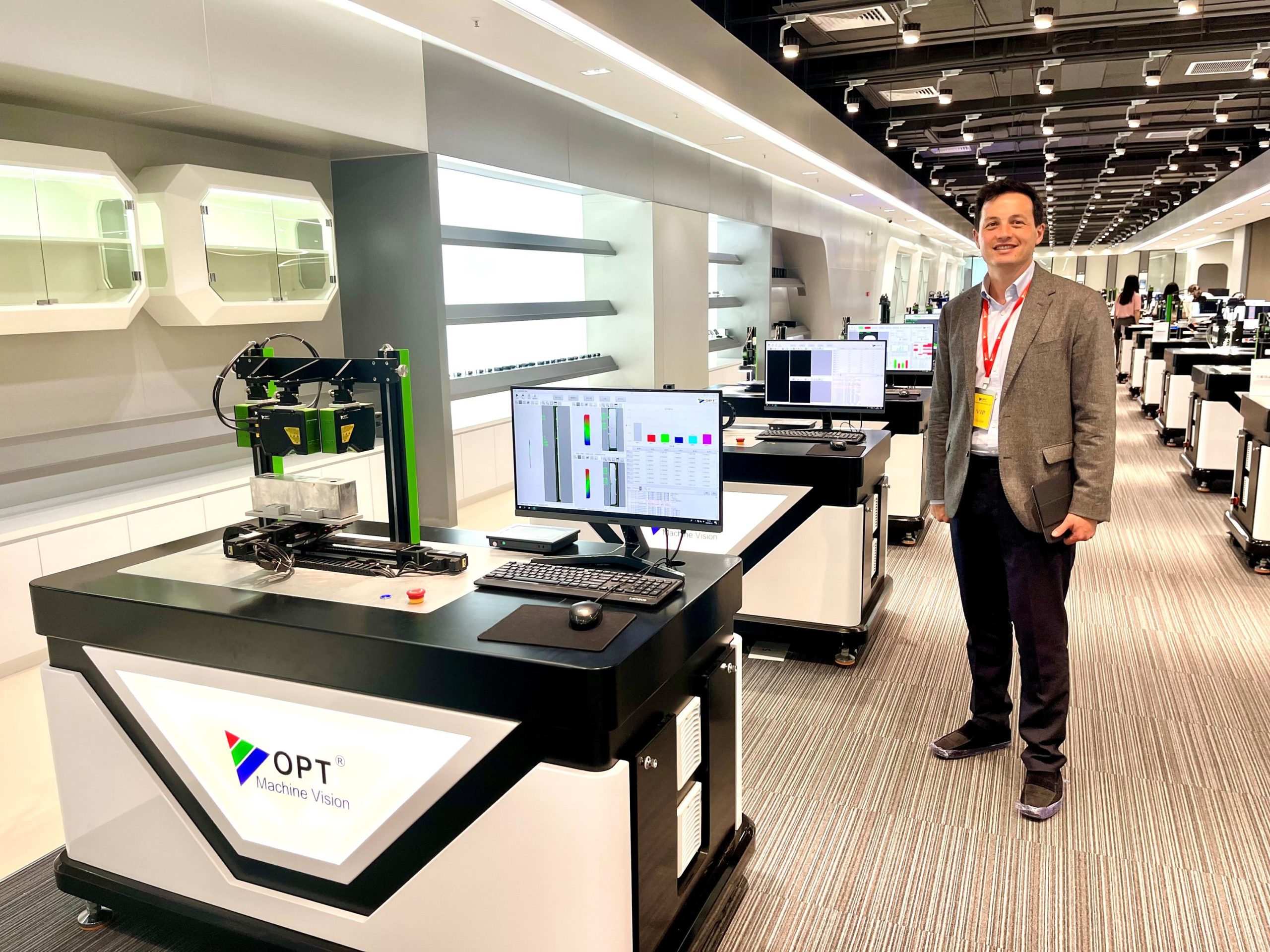JH Explorer in China: In the driving seat of tech progress
Global technology portfolio manager Richard Clode returns from a recent trip to China highly impressed by tech adoption and the advances companies are making towards a more sustainable world.

6 minute read
Key takeaways:
- China’s technology advancement has continued despite the pandemic and geopolitical challenges.
- China has grand ambitions in silicon carbide (SiC), a key enabling technology for electric vehicles, as well as renewable energy.
- Semiconductor shortages post COVID and onshoring to circumvent geopolitical concerns are supporting share gains, aided by the rising technological capabilities of these companies.
| The JH Explorer series follows our investment teams across the globe and shares their on-the-ground research at a country and company level. |
Beijing ring road traffic jams, bustling domestic airports and train stations were a reminder of thankfully how fast life has returned to normal since reopening about six months ago. The inexorable migration to Tencent’s Weixin (WeChat) ecosystem (like Facebook, Whatsapp, Paypal and Amazon rolled into one) continues as I discovered how hard it is to even order a coffee outside of a mini programme (sub-app within a larger app), pay with anything other than WePay, or communicate with companies outside of WeChat. My printed business cards were met with polite bemusement. Short video has become a global phenomenon but was pioneered in China by ByteDance’s Douyin (China’s TikTok) – the daily time spent watching there would give Western parents nightmares!
China’s tech industry is marching forward
So far so predictable, but I was intrigued to find out after a four-year enforced absence, what in the technology sector had really changed. Certainly, China’s technology advancement has not stood still despite geopolitical challenges. Within hours of landing, I was being driven around by a Pony.ai robotaxi with no safety driver. It expertly navigated the large pilot zone in Beijing at speed despite heavy traffic, encountering a variety of people, bikes, mopeds, buses and even autonomous delivery vehicles, with some human drivers showing scant regard for local traffic laws.
My robotaxi experience in Beijing
Robotaxi zones have launched in four cities and Shenzhen has just issued a citywide permit as this technology finally moves forward globally after too many years of hype, In the US, robotaxis are also appearing in more cities and are now available on the Uber ride-hailing platform.
Sustainable transport is moving closer to becoming a reality
Ride hailing, autonomous vehicles and electric vehicles (EVs) are some of the sub-themes within our wider Sustainable Transport mega theme, making transportation safer, greener, connected and more accessible. These are all areas that are undoubtedly creating some exciting opportunities, but to deliver long-term returns for investors we believe it is essential to focus on those companies that have strong competitive moats and maintain valuation discipline. This is complemented by our approach to sustainable investing, which is thoughtful, practical, research-driven and forward-looking.
China has grand ambitions in silicon carbide (SiC) and renewable energy. The former is a key enabling technology for EVs, where Tesla was an early adopter, while for the latter, China has pledged to reach peak carbon by 2030, with around 25% of energy consumption from non-fossil fuels. Avoiding leading edge semiconductor manufacturing and with less sensitive end markets, this is a technology that appears to be at lower risk from geopolitical concerns. German semiconductor giant Infineon Technologies surprised investors in late 2022 by claiming it could source SiC wafers from China with comparable quality, but at a significant discount to current market prices. Infineon has since signed contracts with China semis TankeBlue and SICC, both of which I visited and came away highly impressed with their capabilities and ambitions.

TankeBlue, a leading manufacturer of SiC wafers.
Local capital markets and government subsidies are funding significant expansion plans for these local SiC wafer suppliers. This gives me confidence that current shortages will soon be alleviated, with analysts forecasting a six-fold increase in Chinese capacity from 2022 to 2025 to almost 45% of global SiC wafer supply.* STMicroelectronics recently signed a joint venture with Sanan, which I visited in Xiamen. Along with several other companies I visited, there are ambitions to move downstream into SiC devices. As this is technology with a much higher entry barrier it remains to be seen if they will be successful. With China being by far the largest electric vehicle (EV) market globally, with a rising share of local EV brands keen to source SiC domestically, there are many willing buyers if these companies can conquer the technology.
Semis benefiting from China onshoring
I also met with several Chinese analog and power semiconductor companies. Semiconductors are a key component to develop and deploy clean energy, as well as improving the energy efficiency of many electronic devices. Semiconductor shortages caused by the COVID-19 pandemic made the domestic market more willing to adopt local suppliers, and geopolitical concerns are helping to lock in those share gains aided by the rising technological capabilities of these companies. These are predominantly fabless companies (chip designers) reliant on domestic foundries that are manufacturing using lagging/trailing edge semiconductor equipment. Such companies are generally less affected by US export restrictions and so are consequently benefiting from unprecedented lagging edge semiconductor capital spending. This has been called out by every major semiconductor equipment globally and has been a key reason why this downcycle has been more muted despite the wider industry malaise.
Sustainability is the question as there are many companies expanding and not all of them will be successful. However, there is more opportunity for domestic equipment makers to take market share in the lagging edge semiconductors sector. NAURA, which I also visited, is by far the largest domestic player.

Machine vision tools are improving manufacturing yields and reducing wastage.
The advance of technology in China continues unabated despite some recent challenges. Geopolitics will create risks but also opportunities. We think it is important for investors to be on the ground, meeting face-to-face with companies and supply chains to understand these complexities and how best to invest for clients.
*Arete Research Company, FactSet as at June 2023. There is no guarantee that forecasts will be realised.
Leading edge and lagging (trailing edge) semiconductors: leading edge chips are manufactured using the most advanced technology and are used to power cloud supercomputers, powerful servers, laptops and PCs. Lagging or trailing edge chips form the bulk of semiconductor capacity, used in other components including vehicles, medical devices, smartphones and televisions.
IMPORTANT INFORMATION
Technology industries can be significantly affected by obsolescence of existing technology, short product cycles, falling prices and profits, competition from new market entrants, and general economic conditions. A concentrated investment in a single industry could be more volatile than the performance of less concentrated investments and the market.
Sustainable or Environmental, Social and Governance (ESG) investing considers factors beyond traditional financial analysis. This may limit available investments and cause performance and exposures to differ from, and potentially be more concentrated in certain areas than the broader market.
These are the views of the author at the time of publication and may differ from the views of other individuals/teams at Janus Henderson Investors. References made to individual securities do not constitute a recommendation to buy, sell or hold any security, investment strategy or market sector, and should not be assumed to be profitable. Janus Henderson Investors, its affiliated advisor, or its employees, may have a position in the securities mentioned.
Past performance does not predict future returns. The value of an investment and the income from it can fall as well as rise and you may not get back the amount originally invested.
The information in this article does not qualify as an investment recommendation.
Marketing Communication.
Important information
Please read the following important information regarding funds related to this article.
- Shares/Units can lose value rapidly, and typically involve higher risks than bonds or money market instruments. The value of your investment may fall as a result.
- Shares of small and mid-size companies can be more volatile than shares of larger companies, and at times it may be difficult to value or to sell shares at desired times and prices, increasing the risk of losses.
- If a Fund has a high exposure to a particular country or geographical region it carries a higher level of risk than a Fund which is more broadly diversified.
- The Fund is focused towards particular industries or investment themes and may be heavily impacted by factors such as changes in government regulation, increased price competition, technological advancements and other adverse events.
- The Fund follows a sustainable investment approach, which may cause it to be overweight and/or underweight in certain sectors and thus perform differently than funds that have a similar objective but which do not integrate sustainable investment criteria when selecting securities.
- The Fund may use derivatives with the aim of reducing risk or managing the portfolio more efficiently. However this introduces other risks, in particular, that a derivative counterparty may not meet its contractual obligations.
- If the Fund holds assets in currencies other than the base currency of the Fund, or you invest in a share/unit class of a different currency to the Fund (unless hedged, i.e. mitigated by taking an offsetting position in a related security), the value of your investment may be impacted by changes in exchange rates.
- When the Fund, or a share/unit class, seeks to mitigate exchange rate movements of a currency relative to the base currency (hedge), the hedging strategy itself may positively or negatively impact the value of the Fund due to differences in short-term interest rates between the currencies.
- Securities within the Fund could become hard to value or to sell at a desired time and price, especially in extreme market conditions when asset prices may be falling, increasing the risk of investment losses.
- The Fund could lose money if a counterparty with which the Fund trades becomes unwilling or unable to meet its obligations, or as a result of failure or delay in operational processes or the failure of a third party provider.
Specific risks
- Shares/Units can lose value rapidly, and typically involve higher risks than bonds or money market instruments. The value of your investment may fall as a result.
- If a Fund has a high exposure to a particular country or geographical region it carries a higher level of risk than a Fund which is more broadly diversified.
- The Fund is focused towards particular industries or investment themes and may be heavily impacted by factors such as changes in government regulation, increased price competition, technological advancements and other adverse events.
- This Fund may have a particularly concentrated portfolio relative to its investment universe or other funds in its sector. An adverse event impacting even a small number of holdings could create significant volatility or losses for the Fund.
- The Fund may use derivatives with the aim of reducing risk or managing the portfolio more efficiently. However this introduces other risks, in particular, that a derivative counterparty may not meet its contractual obligations.
- If the Fund holds assets in currencies other than the base currency of the Fund, or you invest in a share/unit class of a different currency to the Fund (unless hedged, i.e. mitigated by taking an offsetting position in a related security), the value of your investment may be impacted by changes in exchange rates.
- When the Fund, or a share/unit class, seeks to mitigate exchange rate movements of a currency relative to the base currency (hedge), the hedging strategy itself may positively or negatively impact the value of the Fund due to differences in short-term interest rates between the currencies.
- Securities within the Fund could become hard to value or to sell at a desired time and price, especially in extreme market conditions when asset prices may be falling, increasing the risk of investment losses.
- The Fund could lose money if a counterparty with which the Fund trades becomes unwilling or unable to meet its obligations, or as a result of failure or delay in operational processes or the failure of a third party provider.
